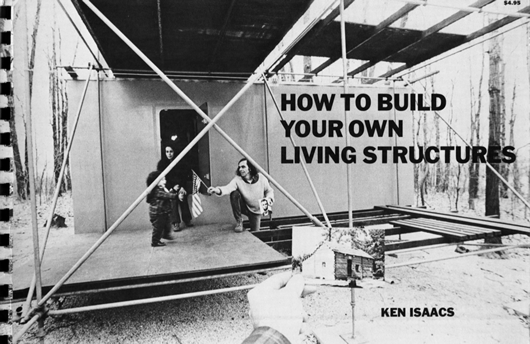
I admit it: I collect hippie books. Optimistic books about making things published by very small presses in the 1970s.
But I only recently realized that I can download PDFs of many of these books from the Library of Radiant Optimism for Let’s Remake the World, and I’m so glad I did. Because I’ve now discovered the joy of Ken Isaacs and want to share his work with the world.
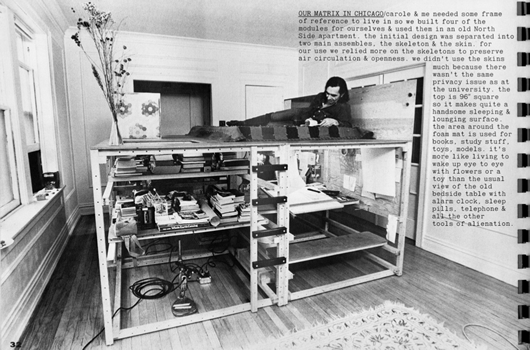
Isaacs was an architect who designed and built modular, multifunctional Living Structures (bigger than furniture and smaller than architecture) which reconfigured the volume of a room. Living Structures were also called Matrices, groups of “mobile space modules like 3D graph paper that you live in and around.” This work led to the development of Microhouses based on stacked tetrahedrons: tiny freestanding buildings made out of stressed-skin plywood panels and galvanized steel pipes.
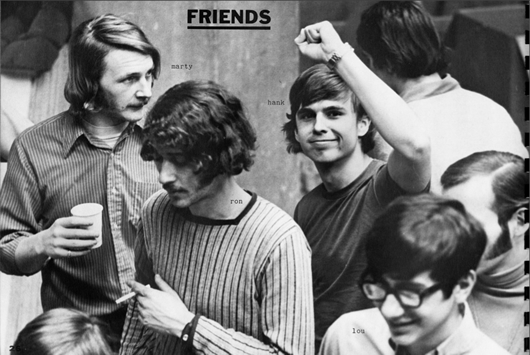
His 1974 DIY classic How to Build Your Own Living Structures is very hard to find, but you can download a PDF of it from Let’s Remake or a higher-resolution version from Public Collectors, which has a collection of equally awesome books up for grabs (check out Working Big: A Teacher’s Guide to Environmental Sculpture).
I’m really not very handy, and I’m an unlikely secret hippie, but Living Structures has actually got me motivated to go find a “real hardware store” (“where the clerks are grim as deacons since they are the last guardians of scarce and arcane products”) and buy some woodworking tools. The book is extremely fun to read and also contains the kind of concise, no-nonsense specs any product person can appreciate.
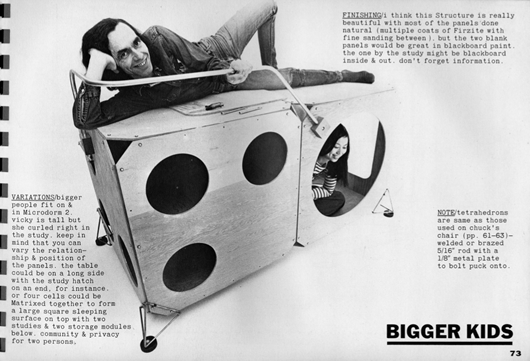
You get a sense early on of where Isaacs is coming from when he starts talking about lofts.
THE NEW FREESTANDING SLEEPING LOFT/ Marshaling long arguments in favor of the sleeping loft right now is about as gratuitous as paperbacking an Eskimo edition of Sir Francis Bacon’s early food-refrigeration experiments. The loft bed is so nifty and exciting to retire to and makes so much sense spatially that it is even rumored that politicians use them. Sleeping above floor level frees a large area of the room for other uses. The traditional static worldview plops a monster BED down in the middle of a room and forever after that the room is a bedroom. It doesn’t even matter how big the room is. Traditional beds, space-eating monsters hunkering down on the floor, are such a presence that three of them could crowd the Astrodome. We are just getting on to the fact that what we can can really use now are multifunctional spaces which can be camera workshops in the morning, rehearsal halls in the afternoon, friendly restaurants in the evening and sleeping areas for only about six hours late at night. Space is too precious to be limited ritualistically to single functions.
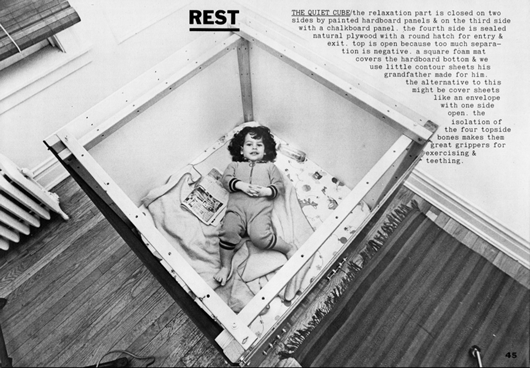
But he also goes into fatherhood:
supercool didn’t prepare me for the wonder of the benign explosion which was the entry of Joshua Henry Isaacs into our collective life. I tended to think of abstract reasons for rearing children making it worth the hassle. The awesome truth is that it’s some experience, like having some exotic stranger come for a long visit. It’s the one life experience I’ve found impossible to take for granted even after all this time. No ego trip like the old-fashioned world but more like watching a beautiful little peach tree grow. The only ego thing involved is watching reinterpreted echoes of your own behavior and attitudes appear in this midget like the reverb from some mighty speaker in the sky driven by the DNA spiral. Sometimes this is OK but sometimes it makes you cringe and hope for the best.
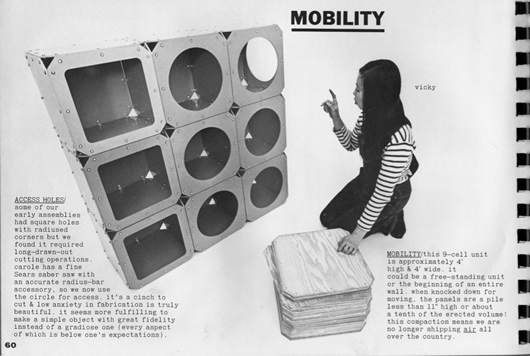
If you want to read these things in bed or in transit on your iPhone or iPad, I recommend the free MyPDFs mobile reader or the iPad-optimized CloudReaders. Back issues of Radical Software are also fun to read this way.